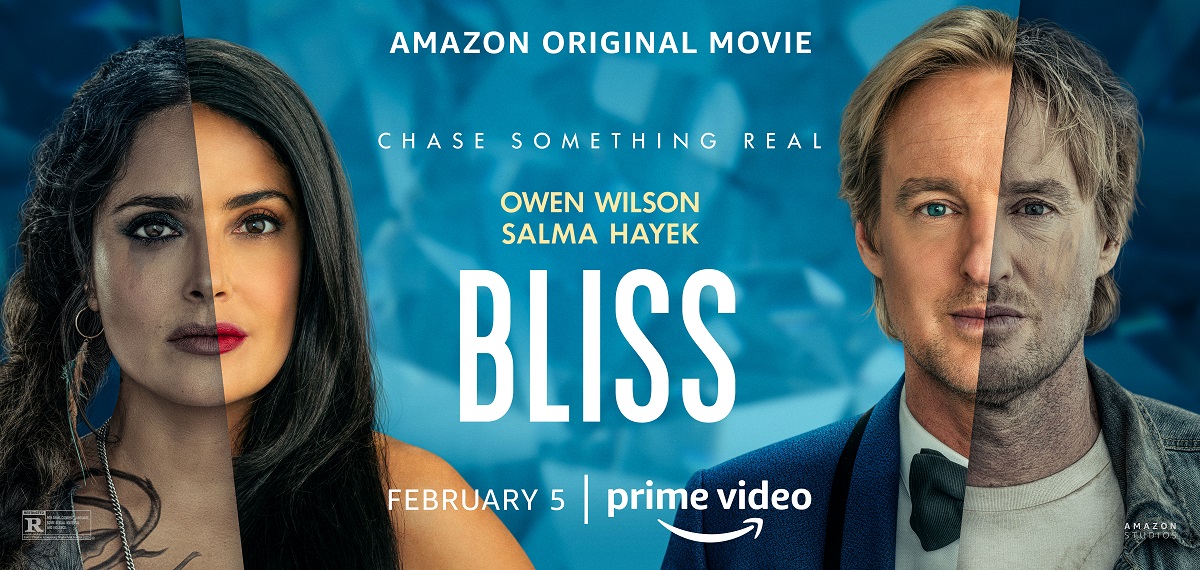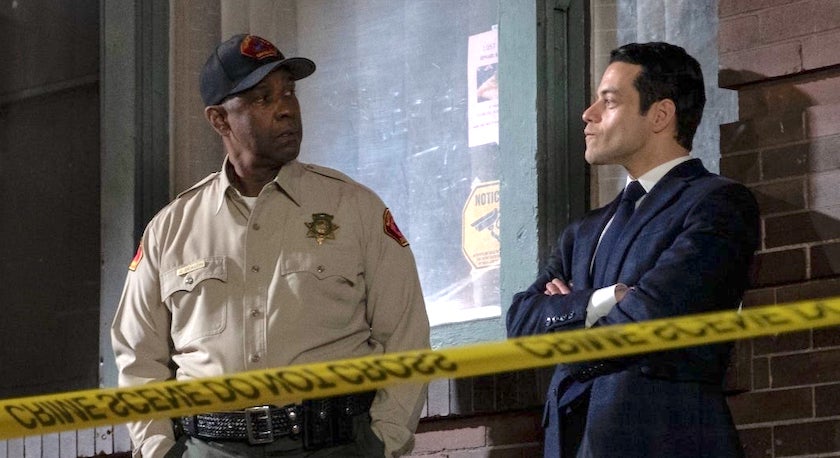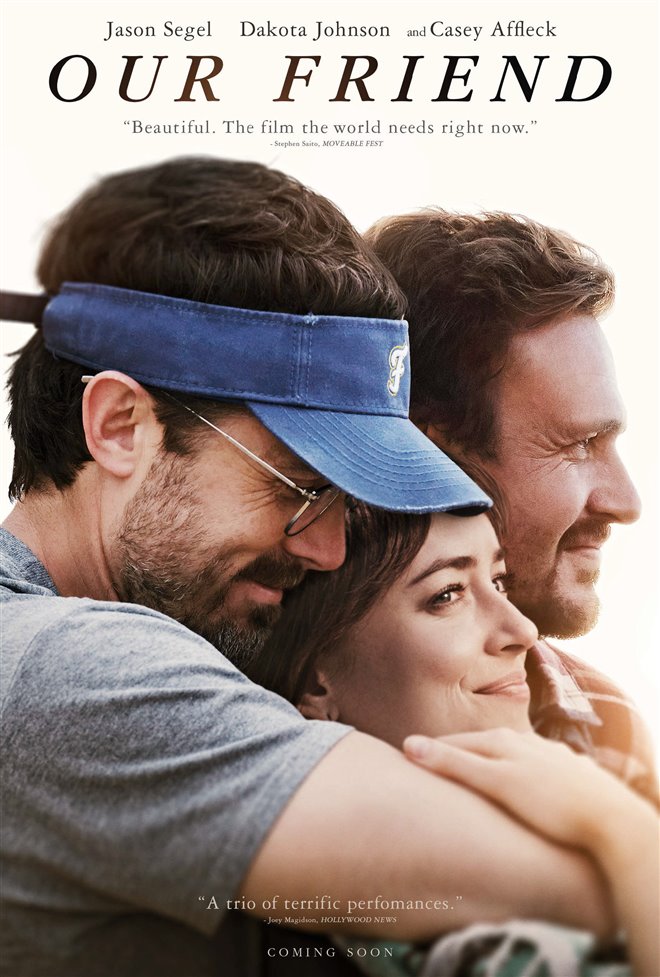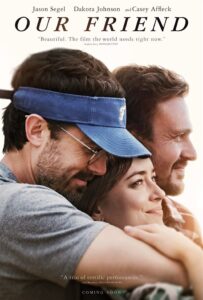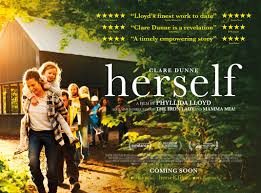Bliss
Posted on February 4, 2021 at 5:50 pm
B-| Lowest Recommended Age: | High School |
| MPAA Rating: | Rated R for drug content, language, some sexual material and violence |
| Profanity: | Strong language |
| Alcohol/ Drugs: | Alcohol, drugs |
| Violence/ Scariness: | Peril and some violence including an accidental homicide |
| Diversity Issues: | None |
| Date Released to Theaters: | February 5, 2021 |

That is the question raised provocatively but very imperfectly in “Bliss,” with Owen Wilson as greg, a gray-spirited low-level worker failing in a soul-killing dead-end job apologizing to customers who call tech support. Our own anxiety levels rise as we see him seemingly not aware of the pressure he is under. The boss wants to see him immediately. But instead of leaving his office, he talks on the phone — to a daughter reminding him of the details of her graduation and to a pharmacy that refuses refill his pain-killer prescription. We learn from this that his marriage is over due to failures on his part, that his promises are not reliable, that he has a drug problem, and that he is in trouble at work. And we see him obsessively drawing pictures of place and a woman he has never seen, like Richard Dreyfuss sculpting mashed potatoes in “Close Encounters of the Third Kind.”
But then it turns out our assumptions and his may be wrong. We find ourselves in a blue-or-red-pill situation, “The Matrix” without the bullet time, or the bullets. After things go even more terribly wrong, Greg finds himself in a bar, where a mysterious woman named Isabel (Salma Hayek) tells him he is “real” in a way the others in the room are not. There may be another reality or, perhaps, just one real reality, which is not the one with the office and the phone calls.
SPOILER ALERT: I am going to have to spoil a few things in order to be able to talk about the movie, so if you do not want any spoilers, stop reading now, watch “Bliss,” and then if you want to know more about what I think about it, you can come back. Isabel does not give Greg the whole story. She just takes him to stay with her at a makeshift shelter in an area where homeless people camp out. It turns out she and Greg are not just part of but responsible for an experiment in re-calibration for people who have found the idyllic life of the future so blissful the only thing they have to complain about is the temperature of the pool water. It just might be that even in a world supposedly free from stress there still remain concerns (about the legitimacy and success of one’s research in absolute terms and in the way it is perceived by others). It may also be that worry and fear are inextricably linked to creativity, imagination, and an innate human inclination to problem solving and some notion of progress.
These are wonderful questions to explore and there are moments of real emotion in the film along with superb design work by Kasra Farahani (“Captain Marvel”). But the script gets tangled up in its own perameters of the world or worlds it creates. The internal logic of the storyline is inconsistent enough to undermine our connection to the characters and to the issues it raises. In case you’re looking around wondering which reality you’re in, my advice is to bet on the one with Bill Nye the Science Guy in it.
Parents should know that this movie includes strong language, peril, and an apparent accidental homicide.
Family discussion: Which reality would you chose and why? What would happen if all trouble, stress, and worry was removed from our lives?
If you like this, try: “The Matrix,” “The Black Box,” “Black Mirror,” and “Passion of Mind”

